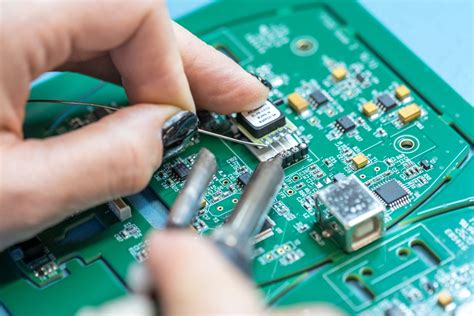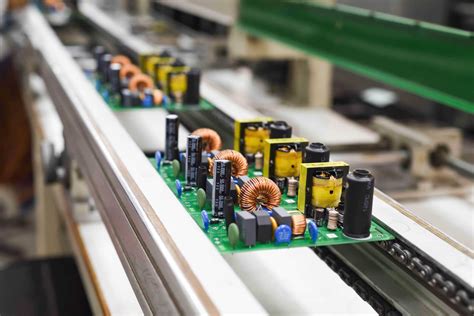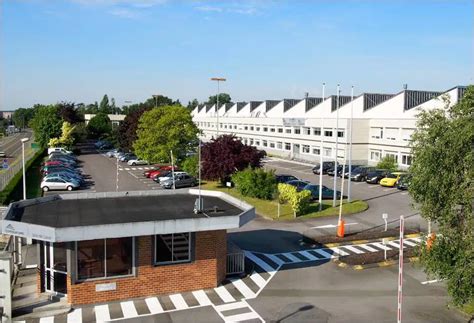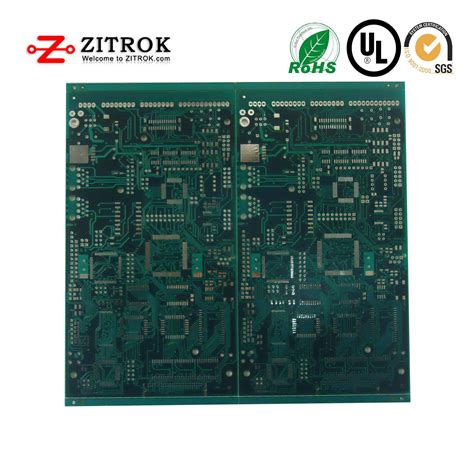Mastering Circuits Assembly: Essential Techniques for Success
Key Takeaways
Mastering pcb assembly involves understanding and implementing a range of essential techniques that can significantly enhance your overall proficiency and effectiveness in the field. At the heart of successful pcba processes lies a commitment to efficiency and precision. Emphasizing quality control throughout production is crucial; implementing regular inspections and adhering to industry standards can highlight potential issues before they escalate. Additionally, best practices aimed at troubleshooting can aid in identifying common obstacles that might arise during assembly, enabling swift resolutions. Utilizing advanced tools and equipment plays a pivotal role in refining these processes, ensuring that every component is placed accurately and securely. By embedding these techniques into your routine, you’ll not only increase your confidence as an assembler but also contribute to the production of high-quality pcb assembly outcomes that stand up to rigorous performance evaluations.
Introduction to Circuits Assembly
In the world of electronics, pcb assembly plays a crucial role in bringing theories and designs to life. Understanding pcba is essential for both beginners and experienced practitioners involved in the manufacturing of electronic devices. The process of circuits assembly involves several intricate steps that require precision and attention to detail. From preparing the components to applying solder, every action contributes to the reliability and functionality of the final product.
To achieve success in pcb assembly, it’s imperative to familiarize yourself with various assembly techniques. Efficient methods can drastically enhance productivity while ensuring that high-quality standards are met. Additionally, unfamiliarity with quality control measures can lead to inefficiencies and potential failures in the final product. By integrating rigorous testing and inspection throughout the pcba process, one can significantly mitigate risks associated with faults.
“Quality assurance is not just a step in production; it’s a cornerstone of craftsmanship,” emphasizes an industry expert.
By adhering to best practices during troubleshooting and optimization, you can refine your skills further, learning how to identify common issues that may arise during assembly. Lastly, adopting advanced tools and equipment can lead to innovative solutions that enhance your assembly processes and set your projects apart in a competitive market.
Fundamental Techniques for Effective Assembly
In the realm of pcb assembly, mastering fundamental techniques is crucial for anyone seeking to excel in this specialized field. The pcba process, which encompasses the assembly of various electronic components onto printed circuit boards, relies on both precision and technique to ensure reliability and efficiency. One effective approach is to begin with a thorough understanding of the schematic and layout design. This allows assemblers to anticipate potential issues and streamline the placement of components.
Moreover, implementing proper soldering techniques is vital. Techniques such as through-hole soldering and surface mount technology (SMT) should be executed with precision to prevent defects that can lead to malfunctioning circuits. Quality assurance during this phase can significantly reduce the risk of rework later in the assembly process.
Another indispensable technique involves the use of dedicated tools, such as soldering stations equipped with fine-tipped irons for intricate electronic components. Utilizing appropriate tools enhances control over solder application and minimizes heat exposure, which could damage sensitive parts.
Effective circuit assembly also benefits from organized workflows. Establishing a systematic approach can improve overall efficiency. For instance, creating a workstation layout that minimizes unnecessary movement contributes to a smoother assembly process.
| Technique | Description |
|---|---|
| Schematic Understanding | Allows anticipation of potential issues |
| Proper Soldering Techniques | Ensures reliable connections |
| Dedicated Tool Usage | Enhances precision and control |
| Organized Workflows | Increases overall efficiency |
By adhering to these core techniques in pcb assembly, assemblers are well-equipped to handle complex assemblies successfully while ensuring high-quality standards are met consistently.
Quality Control Measures in Circuit Assembly
Implementing quality control measures in pcb assembly is essential for achieving optimal results and ensuring the reliability of electronic devices. In the realm of pcba, various techniques can be employed to monitor and enhance the integrity of circuit assemblies. One of the critical approaches is to establish a robust inspection process that includes both visual checks and automated testing protocols. Visual inspections should focus on solder joint quality, component placement accuracy, and PCB surface integrity, while automated tests can assess electrical connectivity and functionality. Additionally, it is imperative to maintain strict adherence to industry standards and specifications throughout the assembly process, which helps minimize defects and enhances overall product reliability. Regular audits of manufacturing processes can further identify areas for improvement, ensuring that flaws are corrected before they affect production output. Furthermore, training staff on best practices in quality management significantly reduces human errors during assembly. By implementing these quality control measures, manufacturers can improve their competitive edge and secure customer satisfaction in a rapidly evolving market.
Best Practices for Troubleshooting and Optimization
When it comes to pcb assembly and pcba, effective troubleshooting and optimization techniques are crucial for ensuring high-quality results. One fundamental approach is to establish a systematic diagnostic process that allows you to identify issues quickly. Start by reviewing your assembly procedures, verifying that all components are correctly placed and soldered. Utilize visual inspections alongside automated testing methods like X-ray inspection or automated optical inspection (AOI) systems to catch any potential problems early on.
Another best practice involves maintaining meticulous documentation throughout the assembly process. Keeping detailed records helps track changes, adaptations, and anomalies that can inform future designs or procedures. Furthermore, regular training for your team on the latest assembly techniques and technological advancements can significantly enhance efficiency in your pcb assembly operations.
Finally, leveraging advanced software tools for simulation and modeling can optimize aspects of design for manufacturability (DFM), ensuring that theoretical designs translate into functional products without unnecessary complications. By integrating these troubleshooting methods and optimization strategies into your workflow, you can not only enhance the quality of your pcba but also streamline the entire circuit assembly process, leading to greater productivity and consistency in outcomes.
Advanced Tools and Equipment for Assembly Success
In the realm of pcb assembly, having the right tools and equipment is paramount for achieving excellence in your projects. Modern pcba processes rely heavily on precision instruments that streamline workflow and enhance accuracy. Notably, advanced soldering stations equipped with temperature control and ergonomic designs are essential for achieving reliable connections without damaging components. Additionally, automated pick-and-place machines have revolutionized pcb assembly, offering high-speed placement of components with unparalleled precision, minimizing human error. Coupled with inspection tools such as optical inspection systems and X-ray machines, these advancements enable thorough quality checks at various stages of assembly. Furthermore, the integration of software tools for design verification allows for seamless transitions from design to production, ensuring that all specifications are met prior to assembly. By investing in these advanced tools and equipment, assemblers not only improve their productivity but also enhance the overall quality of their pcba projects, paving the way for successful outcomes in an increasingly competitive environment.
Case Studies: Successful Circuit Assembly Projects
Examining real-world examples of successful pcb assembly projects provides invaluable insights into effective pcba techniques. In one notable case, a major electronics manufacturer streamlined their assembly process by incorporating automated machinery along with meticulous quality control measures. This shift not only enhanced efficiency but also reduced errors significantly, showcasing the importance of adopting advanced tools in circuit assembly. Another case involved a small startup that faced challenges in managing a high volume of orders while maintaining quality. By implementing best practices for troubleshooting and employing effective communication strategies throughout the team, they successfully scaled their operations while ensuring that each pcb assembly met the highest standards. These examples illustrate how leveraging essential techniques and staying attuned to industry trends can lead to remarkable outcomes in circuit assembly projects, ultimately setting a benchmark for success across various sectors. The lessons learned from these projects underscore the significance of continuous improvement and adaptation in the fast-evolving landscape of electronic manufacturing.
Future Trends in Circuit Assembly Techniques
As technology continues to evolve, the field of pcb assembly is witnessing significant innovations that are shaping its future. One prominent trend is the shift toward automated assembly processes, where robotics and smart machines play a crucial role in enhancing efficiency and precision. This move not only reduces human error but also accelerates production times, making pcba operations more scalable and cost-effective. Additionally, the integration of advanced materials, such as flexible substrates and high-density interconnects, is permitting designers to create more compact and sophisticated circuits. The growing demand for high-performance electronics fuels this trend, driving the need for improved thermal management solutions as well.
Another significant development is the increasing importance of sustainability in circuit manufacturing. Companies are actively pursuing environmentally friendly practices, including the use of recyclable materials and energy-efficient processes in their pcb assembly lines. This commitment to sustainability not only helps reduce waste but also aligns with global trends toward responsible consumption.
Furthermore, machine learning and data analytics are emerging as pivotal tools in optimizing assembly processes. By leveraging real-time data, companies can achieve more effective quality control measures, enhancing overall product reliability in their pcba operations. The continued investment in research and development will likely yield breakthroughs that further streamline the circuit assembly workflow, driving competitiveness within the electronics sector. As these trends unfold, staying abreast of technological advancements will be essential for professionals aiming to excel in circuit assembly techniques.
Conclusion
Successfully mastering circuits assembly requires a deep understanding of various integral components and methodologies. Emphasizing the importance of quality control throughout the pcb assembly process ensures that errors are minimized, ultimately leading to a higher-quality product. Utilizing best practices in pcba is essential, as it allows for efficient troubleshooting and optimization of the assembly process. The relevance of advanced tools cannot be overstated; they empower engineers and technicians to achieve precise results while enhancing productivity. Moving forward, staying abreast of future trends in circuits assembly will not only facilitate ongoing improvements but also position professionals as industry leaders. With each project undertaken, reflecting on these principles will contribute to sustained success and optimal results in circuit assembly endeavors.
FAQs
What is PCB assembly?
PCB assembly, or printed circuit board assembly, is the process of soldering electronic components onto a PCB to create a functional circuit. This essential step transforms a bare circuit board into an operational device, commonly referred to as PCBA.
What are the key techniques for efficient PCB assembly?
To achieve efficient pcb assembly, one should employ techniques like proper component placement, using automated machines for soldering, and implementing consistent quality control measures. These methods ensure the final product meets performance standards and reduces production errors.
How important is quality control in circuit assembly?
Quality control is crucial in pcb assembly as it helps identify defects early in the manufacturing process. Implementing regular inspections and tests can significantly enhance reliability and reduce the likelihood of failures in the finished product.
What are common challenges faced during PCBA?
Common challenges in PCBA include misalignment of components, solder bridge formation, and thermal stress during soldering. Addressing these issues through best practices can lead to more robust assemblies.
Are there specialized tools for advanced PCB assembly?
Yes, there are various advanced tools available for successful pcba, such as stencil printers, pick-and-place machines, and reflow ovens. Utilizing these specialized tools can streamline production processes and improve overall quality.






